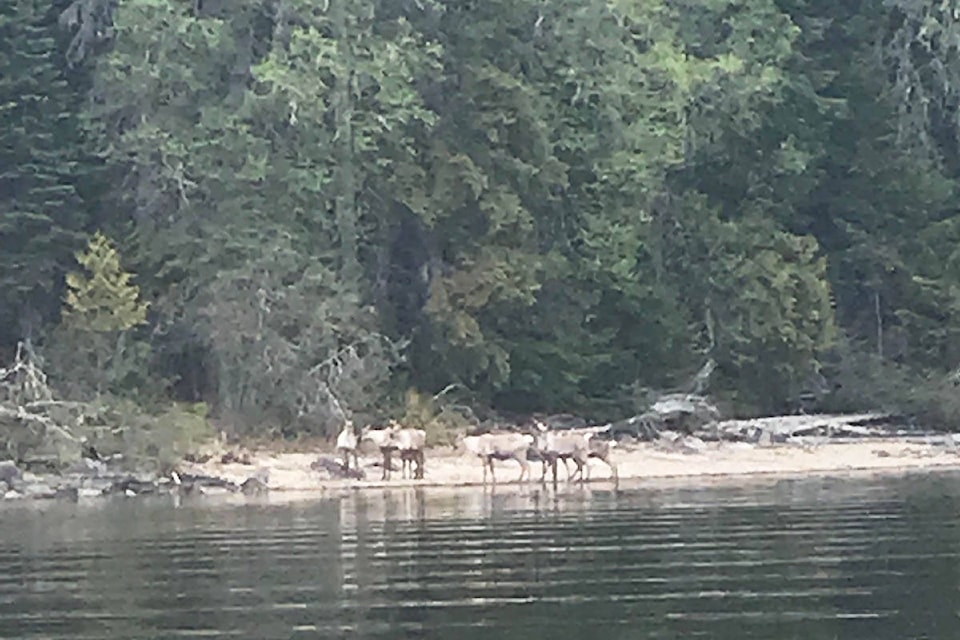Sebastian Jones, Wildlife Analyst
Yukon Conservation Society
Everyone has heard of climate deniers - those who insist that ‘the climate has always changed, it’s been warmer than now in the past and everything worked out fine’.
This example contains some truth, some distortions, some out of context truth and some falsehoods.
Denial ultimately fails because the climate does not care what fables we comfort ourselves with: carbon dioxide still warms the atmosphere no matter what clever accounting tricks we use to pretend emissions from mines and airlines do not count.
There is another, similar, form of denial going on around caribou in Canada.
The evidence is irrefutable; human caused disturbances are harming caribou herds and driving more and more herds into extinction.
Despite this, every time a new activity that will harm caribou is proposed in a herd’s key habitat, mitigations to reduce the effect of the activity are proposed and regulators and industry pretend that we can, to take the example of the Finlayson Caribou Herd near Ross River, have a massive new mine and its associated roads and trails and helicopters and drilling and trenching in the herd’s key habitat, and that the herd will thrive.
And maybe it will survive, for a while - at least for the life of the mine: when the new mine shuts down and leaves the Yukon with a mess to clean up, there may well still be some caribou on the landscape there. But the damage will be too severe, and the herd will be doomed.
It is just as with the climate, they do not care whatever fancy phrases we put on paper, they do not care what we say in the permits we issue: the caribou will be doomed.
Caribou are completely gone from the southern parts of their range now - there are no caribou left in the lower United States - and herds are vanishing in B.C. and Alberta.
Some populations of caribou have been listed under Canada’s Species at Risk Act (SARA) as Endangered, which means they are well on the way to extinction. Provisions of SARA mean that key habitat has to be protected and that recovery plans have to be developed and followed - it is the law.
But Canada ties itself into knots to avoid enforcing the law because it might piss off a Province/Territory, or, worse, a corporation if it has to leave part of the landscape unexploited. The Minister of the Environment defers to Provinces like Alberta and British Columbia that have unblemished track records of ignoring the laws protecting caribou and pushing ahead with more logging, more roads, more mines, more hydro dams, more pipelines, more power lines and more oil and gas wells.
The management plans and recovery plans are glossy and slick, replete with pretty pictures of caribou and full of performative ‘mitigations’ such as putting wiggles into linear corridors.
But the caribou don’t care what we put on paper, they are still chased from their critical habitat, they are still preyed upon by wolves that take advantage of easier travelling related to new roads, cutlines and snow machine trails: and they still die.
We can even see parallels between climate denying actions such as carbon offsets or carbon sequestration while still increasing emissions, and caribou denying actions such as wolf culls and maternal penning while still increasing the industrial footprint.
However, there is a major difference between climate and caribou, there are potent weapons available that can conserve caribou and the land they rely upon. There are First Nations, which have lived with caribou forever and we have the Courts, which care little for political expediency while they examine if the law is being followed.
In the Yukon the future of caribou in the North Yukon and Peel planning regions is as secure as it is possible to be (given our ongoing climate denial). And if the Dawson Regional Land Use Plan lives up to its stated priorities and protects caribou ranges, more caribou herds will persist in the Yukon. In areas without Land Use Plans such as the Finlayson Caribou Herd range, legal precedents such as the recent Blueberry River First Nation vs. The Province of British Columbia ruling give power to First Nations such as the Ross River Dene and the Liard First Nation to ensure development does not violate their constitutional rights to co-exist with caribou.
But in most of Canada, caribou denial continues unabated.
If you think caribou should be present on the land and not just in zoos and on quarters, you can help by writing to your MP, your MLA and to the Ministers of the Environment and tell them that sometimes we have to say “NO!” to industry and diverge from our legacy as hewers of wood and drawers of water and become stewards of the land.
If you want to see the Forty Mile, Hart River and Clear Creek Caribou Herds continue to roam across the Dawson region, write to the Dawson Planning Commission before Nov 1st and let them know how important Caribou are and that their habitat needs to be permanently protected.
If you want to know more about Yukon Caribou and what we are doing to protect them, check out our website or contact the YCS Wildlife Analyst Sebastian Jones at wildlife@yukonconservation.org.
